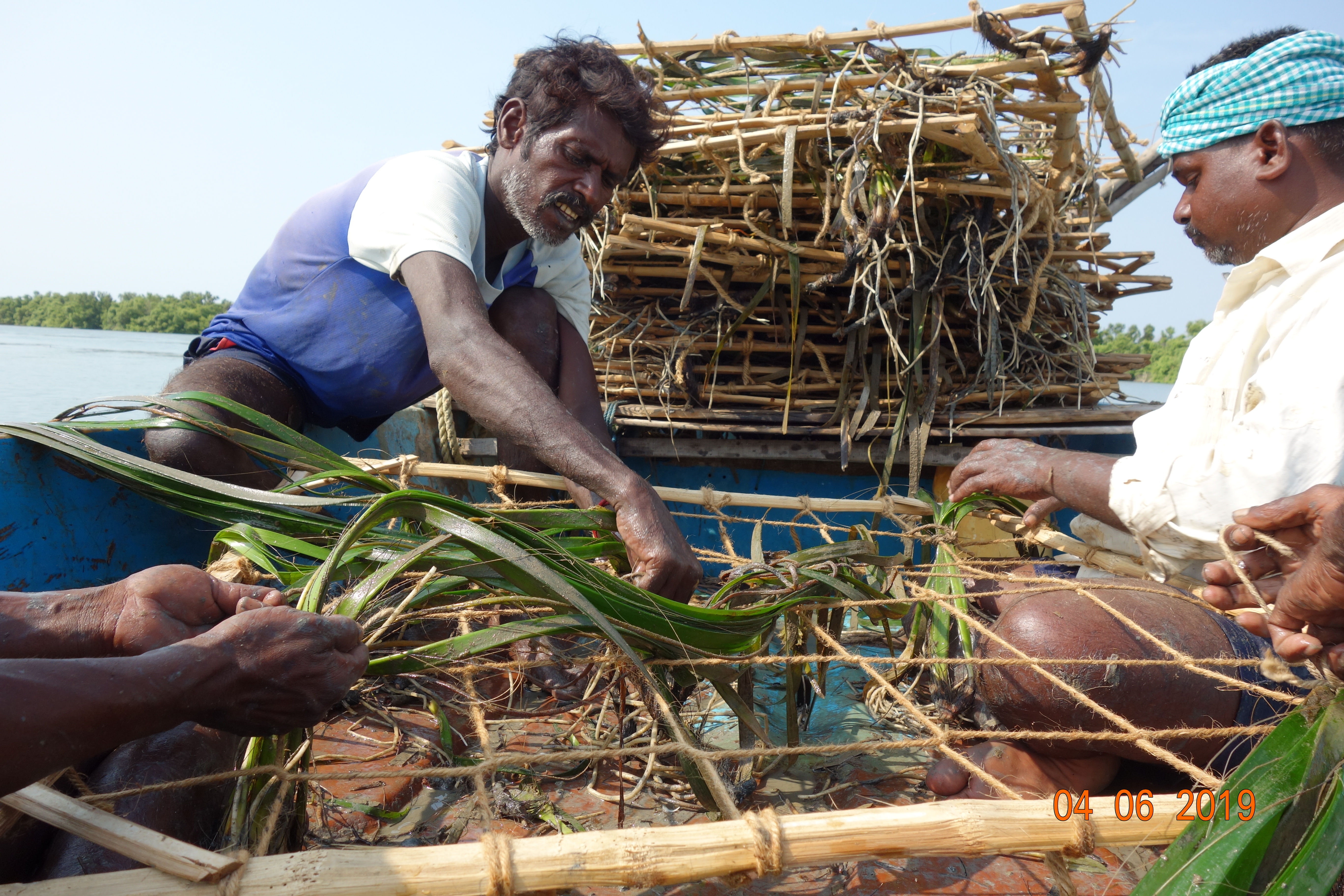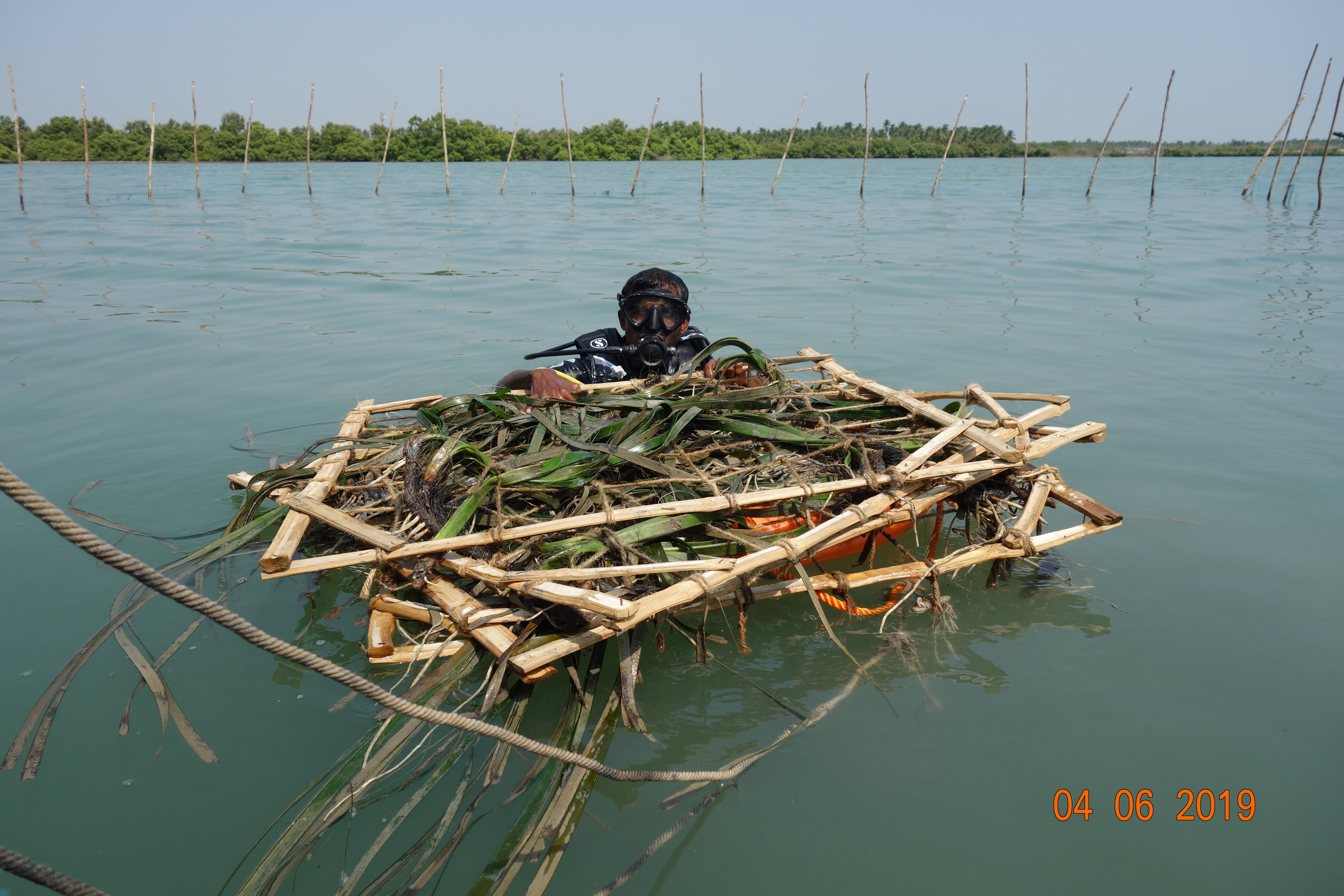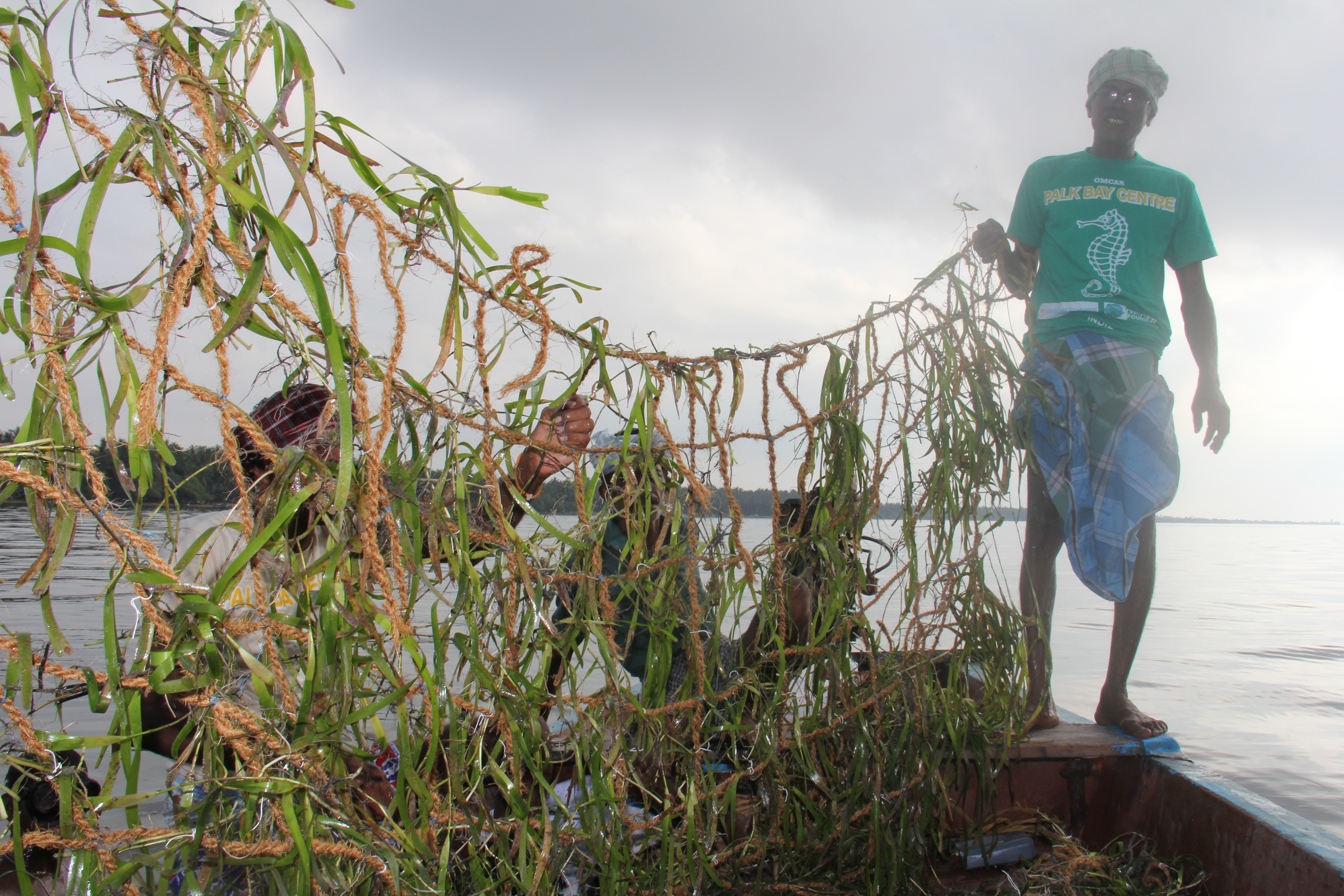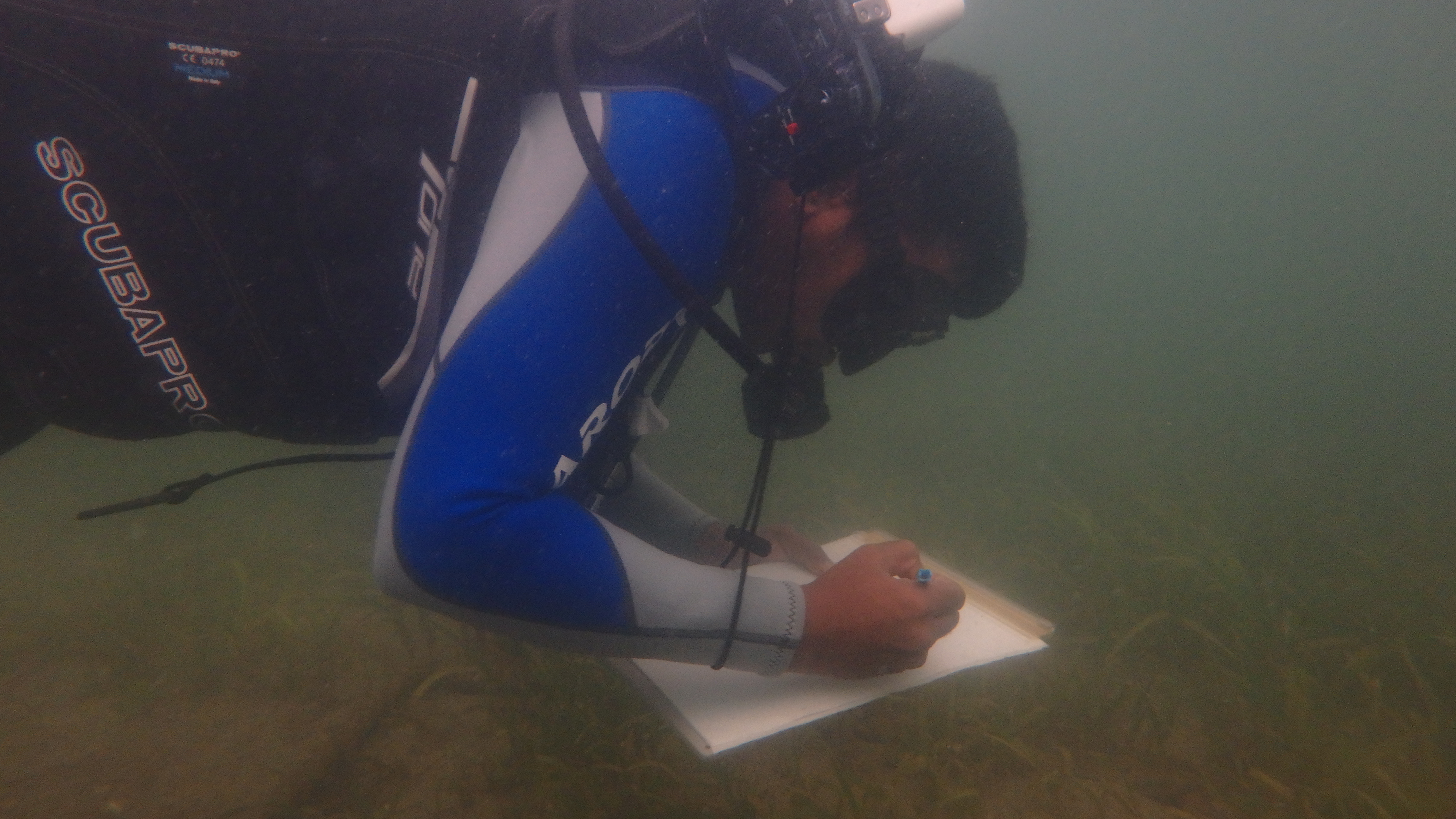




Restoration of seagrass beds is different from the restoration of terrestrial plants, as it needs to work underwater ecosystem. Seagrasses reproduce through sexual reproduction and vegetative reproduction. In seagrass restoration, the seagrass sprigs were removed from the donor site and transplanted to degraded sites. There were already established methods obtained from scientific publications using 1m2 PVC frames for transplanting seagrasses. Although this method is successful, we determined not to use the PVC plastics that need to be permanently fixed on the seafloor for seagrass restoration. So, OMCAR discussed with local fishers to develop an eco-friendly, low-cost method for seagrass restoration. For the first time in India, we used bamboo frames and coconut rope frames as an eco-friendly frames for fixing the transplanted seagrass sprigs from healthy sites to degraded sites. Local fishers were trained and involved in the seagrass restoration work. As both bamboo and coir ropes are available locally, they are cost-effective, and they can be presently fixed on the seafloor until they get degraded naturally. This method is now being adapted and replicated by the government for seagrass restoration in other areas of Palk Bay and the Gulf of Mannar.
- The participatory seagrass restoration procedure is the key strength of this method, which is developed by OMCAR with the consultation of fisherfolks.
- Bamboo and coconut coir ropes are degradable, so they will not pollute the sea like PVC frames.
- Bamboo and Coconut coir ropes are locally available, so they are low-cost to be used in large-scale participatory seagrass restoration.
- The results of this project have been published in a scientific journal.
- Eco-friendly restoration method ensures the sustainability and recognition of the government.
- Participation of the local community in seagrass restoration methods increases their sense of responsibility.
- Locally available raw materials reduce the cost of the restoration accessories while reducing the use of plastics.